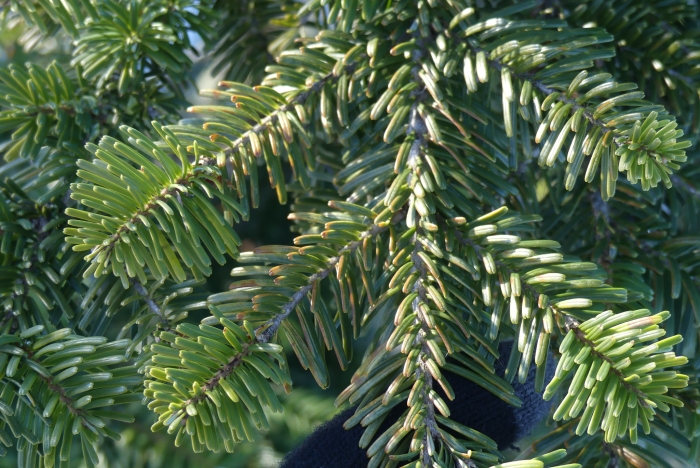Pacific Silver Fir
(Abies amabilis)
Pacific Silver Fir (Abies amabilis)
/
/

Ellyne Geurts
Public Domain



















































Estimated Native Range
Summary
Pacific Silver Fir is valued for its stately appearance and is often used as an ornamental tree in large parks and naturalistic landscapes. It is known for its longevity, with some trees living over 400 years. The tree’s preference for cool, humid summers restricts its cultivation to regions with similar climates. It adapts to a range of soil drainage conditions and can tolerate both full sun and partial shade. While it is not commonly used in urban settings due to its large size, it is an excellent choice for reforestation projects and habitat restoration. Potential problems include susceptibility to root rot in poorly drained soils and infestations by insects such as balsam woolly adelgid.CC BY-SA 4.0
Plant Description
- Plant Type: Tree
- Height: 50-120 feet
- Width: 30-40 feet
- Growth Rate: Slow
- Flower Color: N/A
- Flowering Season: Non-Flowering
- Leaf Retention: Evergreen
Growth Requirements
- Sun: Full Sun, Part Shade
- Water: Medium
- Drainage: Fast, Medium, Slow
Common Uses
Bird Garden, Edible*Disclaimer: Easyscape's listed plant edibility is for informational use. Always verify the safety and proper identification of any plant before consumption., Erosion Control, Fragrant, Rabbit Resistant, Rock Garden
Natural Habitat
Moist, cool forests and subalpine areas of the Pacific Northwest, including the Cascade Range and the coastal mountains of Washington and Oregon, and parts of British Columbia
Other Names
Common Names: Cascades Fir, Lovely Fir, Red Fir, Cascade Fir, White Fir, Amabilis Fir, Purpur-Tanne, Purpurtanne, Sapin Amabilis, Sapin Gracieux
Scientific Names: , Abies amabilis, Pinus amabilis, Abies grandis var. densifolia, Picea amabilis,
GBIF Accepted Name: Abies amabilis Douglas ex J.Forbes